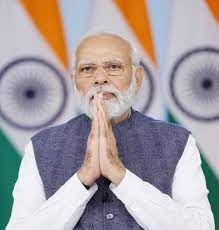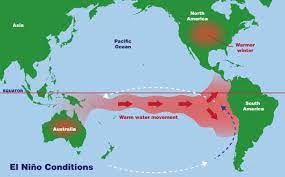UPSC Daily Current Affairs- 9th April 2023 | Current Affairs & Hindu Analysis: Daily, Weekly & Monthly PDF Download
GS-I
Bidri Crafts
Why in News?
About Bidri Crafts:-Recently, Karnataka’s veteran Bidri Crafts artist, Shah Rasheed Ahmed Quadri personally thanked the Prime Minister after being conferred the Padma Shri.
- Bidri ware is a traditional form of handicraft that originated in Bidar, Karnataka.
- It involves the crafting of metal wares using a unique technique that incorporates.
- It is known for its intricate designs and motifs, which are often inspired by nature, Islamic art, and Persian calligraphy.
- It also includes common motifs including flowers, leaves, and geometric patterns.
- Many pieces also feature verses from the Quran or other Islamic texts.
- Bidri ware has received several awards and recognition for its craftsmanship and cultural significance.
- In 2006, it was awarded the Geographical Indication status by the Indian government, which recognizes its unique origin and traditional crafting techniques.
- Bidriware has also been recognized by UNESCO as an Intangible Cultural Heritage of Humanity.
Source: The Hindu
El Nino
Why in News?
Many climate models have forecasted an El Nino in May 2023.
- A record three-year La Nina event ended in March 2023 and currently, the equatorial Pacific Ocean is at normal temperatures, known as the neutral phase.
- Impact on India:
- Weak Monsoon for India: The development of an El Nino in May or June 2023 may cause weakening of the southwest monsoon season, which brings around 70% of the total rainfall India receives and on which most of its farmers still depend.
- However, sub-seasonal factors such as the Madden-Julian Oscillation (MJO) and monsoon low-pressure systems can temporarily enhance rainfall in some parts as witnessed in the year 2015.
- Hot Temperatures: It may also cause heatwaves and droughts in India and other regions around the world such as South Africa, Australia, Indonesia and the Pacific Islands.
- Heavier Rainfall in the West: It brings heavy rainfall and flooding to other regions such as California in the United States and could cause bleaching and death of coral reefs.
- Rising Global Average Temp: The El Nino in 2023 and going into 2024 may push the global average temperature towards 1.5°C warmer than the preindustrial average.
- The warming of the oceans is also one of the major impacts of an El Nino event.
- This is when ocean heat content is already at a record high, according to the World Meteorological Organization (WMO).
- Weak Monsoon for India: The development of an El Nino in May or June 2023 may cause weakening of the southwest monsoon season, which brings around 70% of the total rainfall India receives and on which most of its farmers still depend.
- Previous Such Occurrences – Impacts:
- In the 2015-2016, there were widespread heatwaves in India that killed around 2,500 people in each of the years.
- Coral reefs around the world also suffered from bleaching and the sea level rose by 7 millimetres due to thermal expansion.
- The El Nino, along with global warming, had made 2016 the warmest year on record.
- El Nino events of 1982-83 and 1997-98 were the most intense of the 20th century.
- During the 1982-83 event, sea surface temperatures in the eastern tropical Pacific were 9-18°C above normal.
Source: DownToEarth
GS-II
Indian Space Policy 2023

Why in News?
About Indian Space Policy 2023:The Union Cabinet has approved the Indian Space Policy, 2023 to enhance the role of the Department of Space, boost activities of Indian Space Research Organisation (ISRO) missions and give a larger participation of research, academia, startups and industry.
- It seeks to institutionalise the private sector participation in the space sector, with ISRO focusing on research and development of advanced space technologies.
- The policy will allow the private sector to take part in end-to-end space activities that include building satellites, rockets and launch vehicles, data collection and dissemination.
- The Indian Space Policy-2023, also delineated the roles and responsibilities of ISRO, space sector PSU NewSpace India Limited (NSIL) and Indian National Space Promotion and Authorization Centre (IN-SPACe).
- Strategic activities related to the space sector will be carried out by NSIL, a public sector undertaking under the Department of Space, which will work in a demand-driven mode.
- The INSPACe, created recently, will be the interface between Indian Space Research Organisation and non-governmental entities.
- The policy also spells out the framework for the private sector to use ISRO facilities for a small charge and encourages them to invest in creating new infrastructure for the sector.
- ISRO will not do any operational and production work for the space sector and focus its energies on developing new technologies, new systems and research and development.
- The operational part of ISRO’s missions will be moved to the NewSpace India Limited, a public sector undertaking under the Department of Space.
Assessing & recording weather information:
- Satellites provide more accurate information on weather forecasts.
- It can also assess (and record) long-term trends in the climate and habitability of a region.
- For example, by monitoring the long-term impact of climate change at regional, territorial, and national scales, governments would be able to devise more pragmatic and combative plans of action for farmers and dependent industries.
Real-time tracking:
- Satellites can serve as real-time monitoring and early-warning solutions against natural disasters such as earthquakes, tsunamis, floods, wildfires, mining etc.
- Real-time tracking can also serve multiple purposes in defence.
Communication and connectivity:
- As for connectivity, satellite communication can reach more remote areas where conventional networks would require heavy complimenting infrastructure.
- Additionally, as to the reliability, the World Economic Forum(WEF) stated that satellite communication can help connect 49% of the world’s unconnected population.
- In this light, it must be noted that satellite communications, which are used to facilitate telecommunication services, are among the major categories for investment in the space technology sector.
- Other prominent categories include spacecraft and equipment manufacturing.
Benefits to other sectors:
- The space avenue is an integration of the aerospace, IT hardware and telecom sectors.
- It is thus argued that investment in this arena would foster positive carryover effects to other sectors as well.
Challenges For India’s Space Sector:
- Lower Spending: The funds allocated to the space sector are very less in comparison to other countries.
- The US spent 10 times and China 6 times more than India in the space sector in 2019-20.
- Absence of a Clear Legislative Framework: The draft Space Activities bill was introduced way back in 2017 but hasn’t been passed yet.
- Lack of robust Dispute Settlement Mechanism: This discourages private investment in the space sector. The void was seen in Antrix – Devas cancelled satellite deal.
- The Government of India owes nearly $1.2 billion to Devas Multimedia as per an order of a tribunal of the International Chamber of Commerce.
- Brain Drain: India produces the best brains in the world but is unable to retain them.
- People emigrate from the country for better opportunities and careers that might hamper the development of the space sector.
- Managing big constellations of satellites: Although India has a good potential to launch satellites, managing a huge number of satellites in space could be a challenging task in the future.
- This should be done keeping in mind the possibilities of a future space war.
Way Forward:
Over the past two decades, private enterprises such as Virgin Galactic, SpaceX, Blue Origin and Arianespace have revolutionized the space sector by reducing costs and turnaround time in other spacefaring countries.
However, in India, private enterprises have been limited to being merely suppliers to the government’s space programme. Private sector’s involvement in the long term, as with other commercial sectors, is believed to help spur investment and expertise in the realm which is capital-intensive and demands high technology.
Source: The Hindu
India-Japan Defence Policy Dialogue
Why in News?
What are the Key Details of Dialogue?Recently, the 7th India-Japan Defence Policy Dialogue was co-chaired by Defence Secretary of India and the Vice Minister of Defense for International Affairs of Japan in New Delhi.
- About: The Defence Policy Dialogue is an institutionalized mechanism between India and Japan to discuss bilateral defence cooperation.
- The purpose of the meeting is to discuss a wide range of issues related to defence cooperation between the two countries.
- Highlights of the 7th Dialogue:
- The two countries discussed Service-level exercises and engagements, regional security issues and cooperation in defence equipment & technology.
- The Japanese Vice Minister presented policy updates from their recently released National Security Strategy and National Defense Strategy.
- Both countries appreciated the growing cooperation between the Services through Staff talks and exercises.
- They welcomed the conduct of the inaugural fighter exercise ‘Veer Guardian’ between the Indian Air Force and Japanese Air Self Defence Force in January 2023 in Japan.
- The Defence Secretary emphasized that both the countries should aim to deepen collaboration between the respective defence industries,
- Japanese defence industries were invited for investment in India under the ‘Make in India’ initiative.
- Both sides agreed to diversify cooperation in new and emerging domains like defence space and cyber.
- Defence Cooperation: Japan is one of the few countries with whom India has 2+2 ministerial dialogue
- India and Japan's defence forces also organize a series of bilateral exercises such as:
- JIMEX (naval), Malabar exercise (Naval Exercise), ‘Veer Guardian’ and SHINYUU Maitri (Air Force), and Dharma Guardian (Army).
- Common Groupings:
- Both India and Japan are members of Quad, G20 and G-4, International Thermonuclear Experimental Reactor (ITER).
- India-Japan Act East Forum was established in 2017 which aims to provide a platform for India-Japan collaboration under the rubric of India’s “Act East Policy“ and Japan’s "Free and Open Indo-Pacific Strategy”.
- Investment and ODA:
- India has been the largest recipient of the Japanese Official Development Assistance (ODA) Loan for the past decades for.
- Delhi Metro is one of the most successful examples of Japanese cooperation through the utilization of ODA.
- India’s Western Dedicated Freight Corridor (DFC) project is funded by a soft loan provided by Japan International Cooperation Agency.
- Japan and India had committed to build a High-Speed Railways in India.
- Economic Relations: Japan’s bilateral trade with India totaled US$ 20.57 billion during FY 2021-22. India was the 18th largest trading partner for Japan, and Japan was the 12th largest trading partner for India in 2020.
- India-Japan Digital Partnership: Discussion is going on for the “India-Japan Digital Partnership” with a view to enhancing the digital economy through the promotion of joint projects in the area of IoT (Internet of Things), AI (Artificial Intelligence) and other emerging technologies.
- Japan is looking forward to attracting more highly skilled Indian IT professionals to contribute to the Japanese ICT sector.
- Strategic Clean Energy Partnership: For cooperation in areas such as electric vehicles, storage systems including batteries, electric vehicle charging infrastructure, development of solar energy, hydrogen, ammonia, etc.
- Along with Digital Partnership, it was also announced at the 14th India-Japan Annual Summit
- China Factor: While both countries have sought to strengthen their relationship as a counterbalance to China's influence, their approaches to dealing with China have differed.
- India has been more vocal in criticizing China's actions, while Japan has been more cautious in its approach.
- Defence Exports: India is looking to export defence equipment to other countries, which could potentially compete with Japan's own defence exports.
- Influence of US-China Rivalry: The intensification of Chinese-American rivalry contributes to disturbance of regional security in the Indo-Pacific.
- India and Japan are required to transform their military strategy and build on the common interest in preventing the rise of a securing hegemony in the Indo-Pacific (US and China).
- More collaboration and cooperation can prove beneficial to both nations. There is also a huge potential with respect to Make in India.
- Joint ventures could be created by merging Japanese digital technology with Indian raw materials and labour.
Source: PIB
GS-III
Application Supported by Blocked Amount (ASBA)
Why in News?
Recently SEBI approved a framework for an Application Supported by a Blocked Amount (ASBA) like facility for trading in the secondary market.
About Application Supported by Blocked Amount (ASBA):-
- Application Supported by Blocked Amount, or ASBA, is a SEBI-developed IPO (Initial Public Offering) application process.
- It aims to facilitate a smooth transition in the market, the framework will be implemented in a phased manner.
- It is a process providing authorization to block money in a bank account to subscribe to an IPO issue.
- Applying through ASBA as an investor enables the money to be deducted from the bank account only if your application is chosen for allotment.
- This blocking is carried out by Self-Certified Syndicate Banks (SCSB).
- Self-Certified Syndicate Banks (SCSBs): are SEBI-authorized banks that conform to the conditions laid by SEBI to accept the applications, verify and block the amount to the extent of what the application requires, upload the details to the web and stay updated with the process until the shares are allotted.
- Eligibility: The investor needs to be an Indian resident to avail of ASBA.
- If the money has been blocked in an interest-bearing ASBA account then the amount will continue to earn interest during the time it takes to get the allotment of the share.
- The facility will be optional for investors and stock brokers.
Source: Indian Express
5th International Conference on Disaster Resilient Infrastructure

Why in News?
What is ICDRI?Recently, the Prime Minister of India, addressed the 5th International Conference on Disaster Resilient Infrastructure (ICDRI) 2023.
- About:
- ICDRI is the annual international conference of the Coalition for Disaster Resilient Infrastructure (CDRI) in partnership with member countries, organizations and institutions to strengthen the global discourse on disaster and climate-resilient infrastructure.
- Highlights of ICDRI 2023:
- The Prime Minister said that since India is leading the G20 group, the CDRI will be included in many important discussions.
- This means that the solutions discussed in the CDRI will be considered at the highest levels of global policymaking.
- About:
- CDRI is an Independent International Organization consisting of global partnership of national governments, United Nations agencies and programs, multilateral development banks and financing mechanisms, the private sector, and academic and research institutions.
- It aims to increase the resilience of infrastructure systems to climate and disaster risks, thereby ensuring sustainable development.
- It was launched in 2019, at the United Nations Climate Action Summit in New York.
- CDRI is India's second major global initiative after the International Solar Alliance (ISA).
- The CDRI Secretariat is based in New Delhi, India.
- Members:
- Since its inception, 31 countries, 6 international organisations and 2 private sector organisations have joined CDRI as members.
- Significance for India:
- CDRI provides a platform for India to emerge as a global leader in climate Action and Disaster Resilience.
- It boosts India's soft power, but more importantly it has wider connotation than just economics, as synergy between disaster risk reduction, Sustainable Development Goals (SDGs) and Climate Accord provides for sustainable and inclusive growth.
- Infrastructure for Resilient Island States (IRIS):
- India launched this initiative as a part of the CDRI that would focus on building capacity, having pilot projects, especially in Small Island Developing States or SIDS.
- SIDS face the biggest threat from climate change.
- India’s space agency ISRO will build a special data window for them to provide them with timely information about cyclones, coral-reef monitoring, coastline monitoring etc. through satellite.
- Infrastructure Resilience Accelerator Fund:
- The Infrastructure Resilience Accelerator Fund is a fund supported by both the United Nations Development Programme (UNDP) and United Nations Office for Disaster Risk Reduction (UNDRR).
- It is a trust fund that will be managed by the United Nations Multi-Partner Trust Fund Office (UN MPTFO) to help in improving the ability of infrastructure systems to withstand disasters, with a special focus on developing countries and Small Island Developing States (SIDS).
Source: PIB
|
38 videos|5293 docs|1118 tests
|
FAQs on UPSC Daily Current Affairs- 9th April 2023 - Current Affairs & Hindu Analysis: Daily, Weekly & Monthly
| 1. What are the subjects covered in the UPSC GS-I exam? |  |
| 2. What is the significance of the UPSC GS-II exam? |  |
| 3. What are the topics included in the UPSC GS-III exam? |  |
| 4. How can I prepare for the UPSC GS-I exam? |  |
| 5. What is the importance of current affairs in the UPSC exams? |  |

























